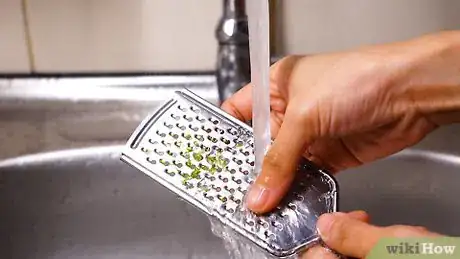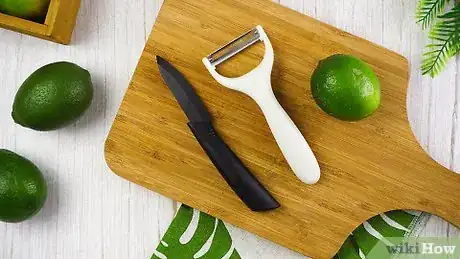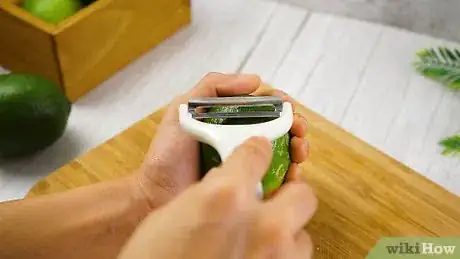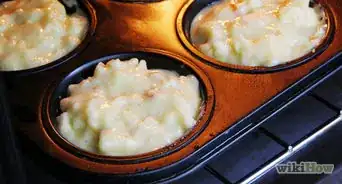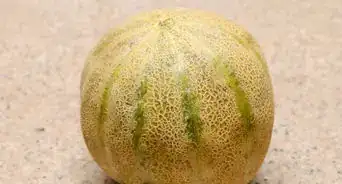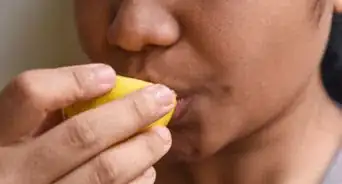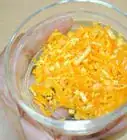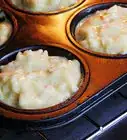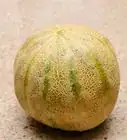This article was co-authored by wikiHow Staff. Our trained team of editors and researchers validate articles for accuracy and comprehensiveness. wikiHow's Content Management Team carefully monitors the work from our editorial staff to ensure that each article is backed by trusted research and meets our high quality standards.
The wikiHow Culinary Team also followed the article's instructions and verified that they work.
This article has been viewed 479,776 times.
Learn more...
The zest of a lime is the outer green layer of peel, which contains fragrant and flavorful oils. Lime zest adds intense flavor to cocktails, desserts and a number of other recipes. The easiest tool for creating fine lime zest for cooking is a microplane, while long garnish strips or cocktail twists can be made with a traditional zester. However, with a little more effort and practice, either form of zest can be created with nothing more than a sharp knife or vegetable peeler.
Things You Should Know
- To zest a lime with a grater, position the grater above a cutting board and push the lime across it, rotating the lime to remove all the skin.
- Pull a zester along the lime’s surface, rotating the lime so that you can remove the colored zest in thin strips.
- The lime zest can also be peeled using a vegetable peeler as a last resort—though you may have to trim or chop the zest afterward.
Steps
Using a Microplane or Fine Grater
-
1Wash the lime under cool, running water. Rub the limes gently with your fingers to remove grime or waxy substances, even if there is no visible dirt on the lime. Pat dry with a clean towel to clean the lime further and make it easier to grip.
-
2Place your microplane above a cutting board at a 45-degree angle. A microplane grater is a flat or curved metal kitchen tool with tiny, sharp holes across its surface. It can be used to produce finely grated lime zest with little effort.
- If you have a grater with several sizes of holes, use the smallest size. It may or may not be a microplane, but can be used as a zester nonetheless.
Advertisement -
3Gently push the lime across the surface of the microplane. Rest your lime on top of the microplane, near the base. Push the lime gently across the blades. This should shave the skin into a fine zest, which will fall onto the cutting board for you to collect.
- Notice that the blades are angled in one direction. Pushing the lime against the cutting edges of the blades will produce zest, while pushing it in the opposite direction will have no effect. The cutting edges of the blades should be facing up toward the ceiling.
- If you are using a fine grater instead of a microplane, push as gently as possible to avoid digging into the bitter, white pith beneath the skin.
-
4Rotate the lime to zest the rest of the fruit. Zest the first area until the colored skin has been removed. Once the white pith beneath the skin is revealed, rotate the lime to rub a new section of the colored skin over the microplane in the same way.
- Be careful not to remove the bitter white pith beneath the skin.
-
5Collect the zest and place it in a small bowl. Once the whole lime has been zested, or you have as much zest as you need, set aside the lime for later use. Use a knife to scrape the zest off the cutting board and into a small bowl, or directly into the dish you are cooking as instructed by the recipe.
- You don't need to spend the effort getting every last piece of zest out of the lime. The ends of the lime may be difficult to zest, for instance.
-
6Rinse the microplane immediately or leave it in a warm location to dry out. If you allow the zest residue to dry in the tiny holes of the microplane, it can be difficult to clean out later. Use running water to wash it out immediately, scrubbing with a thick-bristled brush. Alternatively, try using no water at all and setting the microplane near a stove or on a sunny windowsill. The heat may be enough to dry out the stuck pieces until they can be easily brushed off.[1]
Using a Traditional Zester
-
1Wash and dry the lime. Hold the lime under a stream of cool water and rub gently. Pat dry with a towel.
-
2Get out your cutting board and zester. A zester is a kitchen tool with several tiny blades or sharp holes, which creates long, curling ribbons of lime zest, perfect for garnishing. Alternatively, these strips can then be chopped finely for use in cooking.
- Some refer to this tool as a "traditional zester" and call microplanes "microplane zesters."
-
3Pull the zester along the surface of the lime. If you are creating a garnish for a cocktail or dish, remove part of the white pith along with the colored zest in order to keep the curl intact.[2] If you are using the zest for cooking, try to only remove thin strips of the colored zest.
-
4Rotate the lime and repeat the process. Once the strips have been removed and the white pith beneath is exposed, rotate to an untouched section of the lime. Continue to pull the zester over the lime until you have the amount of zest you need for your recipe.
- The thickness of lime skin varies more than most citrus fruit, so it is difficult to predict how much zest is produced by one lime. If the recipe calls for "zest from one lime" without specifying the variety of lime, use approximately two tsp (10 mL) of zest.
-
5Chop the strips of zest finely (optional). If you are using the zest as a decorative garnish, skip this step. If you are using them in a recipe, use a sharp knife to cut the zest into fine pieces.
Using a Vegetable Peeler or Paring Knife
-
1Use this method only if you don't have other tools. When you don’t have a microplane or a zester, then a vegetable peeler or paring knife will get the job done. This process isn’t recommended if you want uniform curls or a very fine zest.
-
2Rinse and dry the lime. Hold the lime under running water and rub off grime with your fingers. Pat dry with a clean towel.
-
3Place the lime on a cutting board and hold it with your non-dominant hand. Set a clean cutting board on a stable surface. Place the lime on top of the cutting board and hold it firmly in place near the base.
- If you are right-handed, hold the lime with your left hand. If you are left-handed, hold it with your right hand.
-
4Position the vegetable peeler or paring knife. Hold the peeler or knife against the top of the lime, with the blade facing you. Do not try to point the blade away from you, as zesting this way provides less control and increases the odds of cutting yourself.
-
5Methodically peel the zest from the lime. Pull the peeler or knife toward you, pressing lightly into the lime's skin. Ideally, only remove the colored zest portion of the peel, not the white pith underneath. However, press deeper into the pith if it helps keep the knife steady and controlled.
-
6Trim the white pith from the zest unless using strips for garnish. Use your paring knife or any sharp, small knife to remove large pieces of white, fleshy pith from the underside of the peeled zest. This is highly recommended if using the zest in recipes, as the pith adds a bitter taste. However, if you are using the zest strips as garnish or in a cocktail, you do not need to remove the pith.
-
7Chop the zest into small pieces (optional). Use the same knife to chop the zest into fine pieces. It is now ready to be added to recipes. As for the rest of the lime, wrap it in plastic wrap and place it in the refrigerator for later use.
Community Q&A
-
QuestionFor how long will the zest keep?
 Community AnswerIt depends on when, where and how you keep it. In the fridge zest will keep for 3-5 days.
Community AnswerIt depends on when, where and how you keep it. In the fridge zest will keep for 3-5 days. -
QuestionDoes it pair well with cheese?
 Community AnswerLime zest should pair well with Mexican cheeses.
Community AnswerLime zest should pair well with Mexican cheeses. -
QuestionWhere do limes come from?
 Community AnswerLimes grow off on a tree, just like lemons and oranges. They grow anyplace that other citrus trees grow well, but are found primarily in Florida, Mexico, and the West Indies.
Community AnswerLimes grow off on a tree, just like lemons and oranges. They grow anyplace that other citrus trees grow well, but are found primarily in Florida, Mexico, and the West Indies.
Things You'll Need
- Cutting board
- Small bowl
- Microplane or
- Zester or
- Vegetable peeler or
- Paring knife
References
About This Article
To zest a lime, start by washing it with cool water. Then, hold a grater above a cutting board so it's at a 45-degree angle and gently drag the lime across it. Go from the top of the grater to the bottom. Rotate the lime after each stroke before dragging it across the grater again. Once you've grated off all of the green peel, scrape the pile of zest on the cutting board into a bowl and add it to your recipe. If you want to learn how to use a zesting tool for your limes, keep reading!

